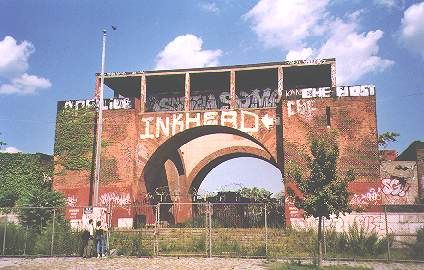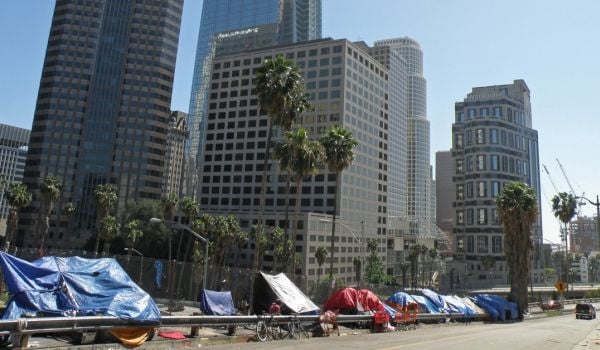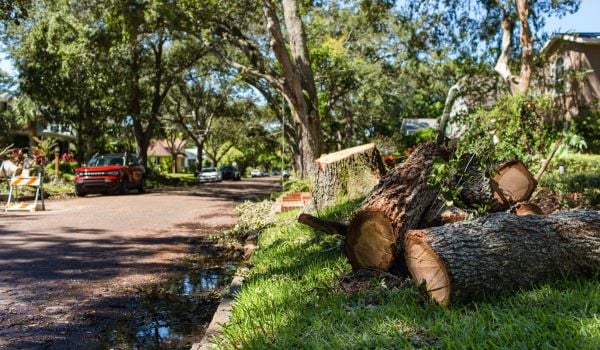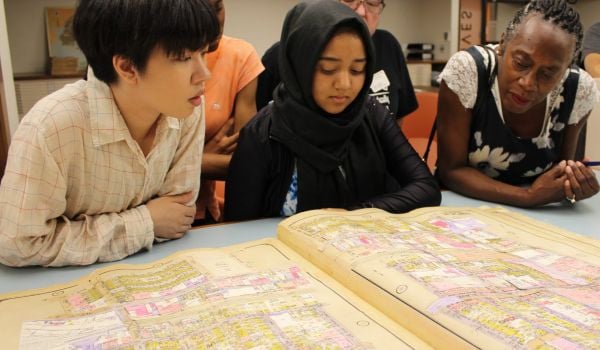Last week, NPR reported that Williamsburg Brooklyn had the lowest Census response rate of any neighborhood in the city. Williamsburg, Brooklyn, is of course known to be the “hipster” capital of the United States, if not the whole entire world, which is quite a distinction. NPR did some great on-the-street reporting, including speaking to a couple guys who work at a record store just off Bedford Avenue, the main drag, who suggest that maybe if they got paid $5 – roughly what an hour of their time is worth, after taxes – to fill out the form, they would do it.
Naturally, this story generated a good deal of discussion, because it’s about a group of people who may or may not actually exist, and are known to drive up pageviews if you put them in your headlines.
FreeWilliamsburg, Williamsburg’s blog of record, pointed out that “hipster” (read: White, or L-Train) Williamsburg actually didn’t have such low return rates. Indeed, when I checked, the return rates weren’t the low 30% reported by NPR, but hovered around the mid-40’s, still comfortably below the city-wide average. The lower return rates were from the Hasidic section of South Williamsburg, which led to a low neighborhood-wide percentage.
Aaron Short, at A Short Story wrote that Hasidic turnout might have been low because the forms were mailed out during Passover, an argument that would make a bit more sense if Census forms were made of leavened bread, and you had to eat them in order to return them. But even if NPR’s methods were imprecise, the article was not written for no reason at all, and those interviews did actually happen. In my mind, the story has what Stephen Colbert would call “truthiness”; even if it’s not totally true, it fits in with certain preconceived notions of what we believe to be true — the sort of heuristic devices we use to navigate an increasingly confusing, media-saturated world. The NPR story relates specifically to the notion that “hipsters” — already a heuristic device of sorts — are self-absorbed jerks. One would think that this sort of self-absorption might stop at dietary restrictions, or taste in clothing, but the NPR story suggests that it transcends cultural signifiers, and so-called “hipsters” don’t care about their neighborhoods enough to fill out a ten-minute form, and this could affect how federal dollars are spent in the coming years.
Hipster-bashing aside, that’s very important stuff. Also, it’s worth pointing out that even if NPR was somewhat misleading in their analysis, Williamsburg’s Census return rates were a good 10 percent lower than the East Village’s, which is just across the river, with a similarly young demographic, but with fewer “hipsters.” It used to be edgy, but now few can afford to live there.
Trustafarians, fauxhemians, hipsters — whatever silly label you want to apply to the young, mostly educated, mostly white, part of the population that listens to bands you don’t — are the people who tend to move into downtrodden neighborhoods, opening them up to all sorts of economic development, often at the expense of long-term residents. Dozens of Census tracts in New York City have been massively altered over the past ten years by an influx of these types, arguably for better rather than worse. The Census provides these neighborhoods that are re-expanding the rare opportunity to let the federal, state, and local authorities know that they’re there; that the neighborhood is not as abandoned as they think. Last Census, North Brooklyn lost $4 billion in federal money. It would be a shame to see that happen again, especially with the considerable demographic shifts in the last ten years.
After reading the story, I was immediately reminded of Brooklyn-based sociologist Sharon Zukin’s work, specifically her book Naked City, in which she examines issues of “authenticity” in gentrifying urban neighborhoods in New York. Ultimately, she concludes that people who gentrify neighborhoods end up destroying what initially attracted them to the neighborhood in the first place.
Her take on the Census issue is not that it’s an issue of self-absorption, per se, but one of rootlessness. In Naked City, she reported that a full 29 percent of Williamsburg-Greenpoint was in the 20-34-year-old range. Professor Zukin wrote to me, via email, that though “Williamsburg residents may identify with the neighborhood in some ways, they probably feel that it’s not their permanent home — which could be, in their view, where their parents live even if they haven’t lived there in years, or where they would rather live.” We also spoke on the phone, and she pointed out that she has “noticed over the last ten, fifteen years, is what seems to be 50 percent of the graduates of every art school move to Williamsburg, or at least every art school in the Eastern half of the United States … I haven’t done a study of that, but I know there’s people coming from other parts of the country, and also from overseas living in Williamsburg, maybe that contributes to them not feeling really rooted there.”
If you buy into Zukin’s portrait of gentrification, it should come as no surprise that hipsters, those who “fetishize the authentic”, are the ones repopulating our once down-trodden neighborhoods. This doesn’t mean that none of them return their Census. A quick check of “The Williamsburg(s) of the West,” Silverlake and Echo Park in Los Angeles, reveals return rates higher than the city average.
The important lesson here relates back to the “truthiness” of the NPR story. Whether it’s true or not, we collectively seem to believe that apathetic, self-centered jerks are the ones gentrifying inner city neighborhoods. And, at the same time, we are willing to believe that they don’t care about the future of their neighborhood, unless it relates to bike lanes (a noble, but misguided effort, in my opinion).
Without any sort of vision from our government on what our cities should look like in the future, our old slums — well, some — are being repopulated by young people who have even less interest in the improvement of their neighborhood, because that would only raise their rents. The only ones who do seem interested in the future of neighborhoods like Williamsburg are real estate developers who stand to make a fortune off of flipping the neighborhood to more professional types once it’s ready. This is simply accepted as the norm in New York, and other cities, and it’s a destructive – or at least disruptive – process.
Perhaps if Census results show just how drastically certain urban neighborhoods in our biggest cities changed, it will give the federal government the opportunity to develop some sort of vision for urban America. For example, could HUD somehow develop a new policy to help harness private sector real estate developers’ ambitions into something more equitable, or at least less disruptive to the fabric of older neighborhoods? Given that young people, poor people, and middle-class people are being driven further and further from gentrifying city centers, could the USDOT develop a better vision for urban public transit?
The only way we’ll ever know is if people mail them back.
















